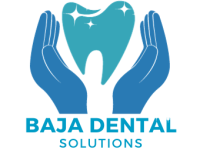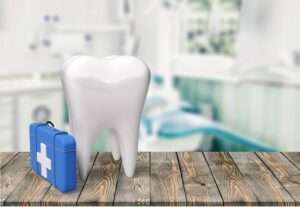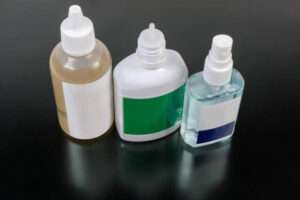Table of Contents
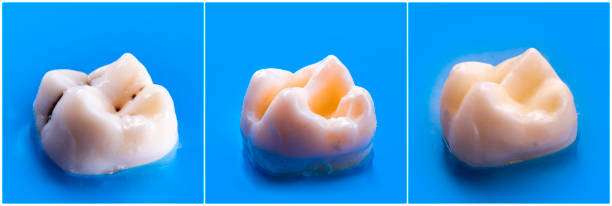
In the realm of dentistry, when it comes to restoring damaged or decayed teeth, inlays and onlays stand out as reliable and effective solutions. These dental procedures, known as Baja Dental Solutions in Tijuana Mexico, have gained popularity for their natural-looking results and durable performance. Let’s dive into the details of inlays and onlays, exploring their nuances, costs, and benefits.
What are Inlays and Onlays in Dentistry?
Discover the sweet spot between fillings and crowns – inlays and onlays, dental restorations that strike the balance. They are custom-made in a dental laboratory and crafted from materials like porcelain, composite resin, or gold. These restorations are designed to fit precisely into or onto the damaged tooth, restoring its structure and functionality.
Key Differences: Onlays vs. Inlays
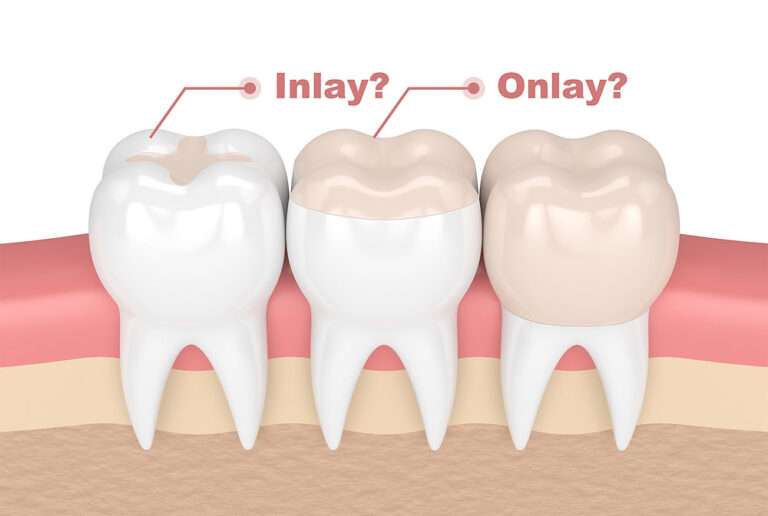
- Inlays: These are used when the damage or decay is within the cusp tips of the tooth.
- Onlays: Also known as partial crowns, onlays are employed when the damage extends to one or more cusps or the biting surface.
The Inlay and Onlay Procedures
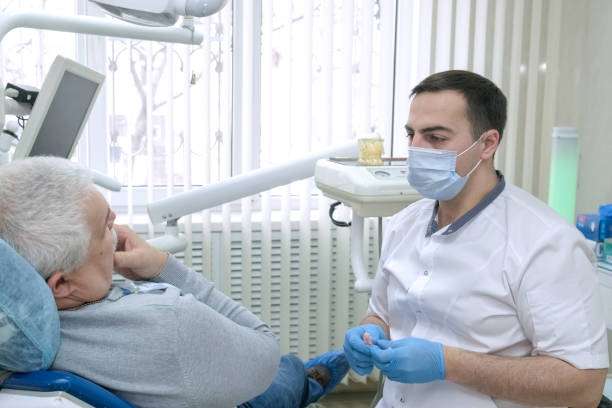
Assessment and Diagnosis
The journey begins with a comprehensive assessment by a skilled dentist. Through visual examination and potentially aided by dental imaging, the extent of damage or decay is evaluated. The dentist determines whether inlays or onlays are the most suitable solution for preserving and restoring the tooth.
Tooth Preparation
Once the decision is made to proceed with inlays or onlays, the dentist begins the tooth preparation process. This involves removing the damaged or decayed portion of the tooth, creating a clean and stable foundation for the restoration. The amount of tooth structure removed is minimal compared to traditional crowns, preserving more of the healthy tooth.
Impression Taking
With the tooth prepared, the next step involves taking an impression. This impression serves as a mold from which the custom inlay or onlay will be crafted. Precision is crucial at this stage to ensure a snug fit and optimal functionality of the final restoration.
Temporary Restoration
While the permanent inlay or onlay is being meticulously crafted in a dental laboratory, a temporary restoration is placed on the prepared tooth. This temporary solution protects the tooth from further damage and maintains functionality until the final restoration is ready.
Custom Craftsmanship
The fabrication of inlays and onlays is a work of precision and artistry. Dental technicians use the impression to create a custom-made restoration that perfectly matches the shape and contours of the patient’s tooth. Materials like porcelain, composite resin, or gold are chosen based on factors such as durability and aesthetic preferences.
Final Placement
Once the custom restoration is ready, the patient returns for the final placement. The temporary restoration is removed, and the dentist ensures that the permanent inlay or onlay fits seamlessly into or onto the tooth. The restoration is then bonded in place, creating a strong and durable connection with the tooth structure.
Bite Adjustment and Polishing
After the bonding process, the dentist makes any necessary adjustments to ensure the patient’s bite is natural and comfortable. Excess material is trimmed, and the restoration is polished to achieve a smooth surface. This attention to detail enhances both the function and aesthetics of the inlay or onlay.
Post-Procedure Care and Instructions
Patients receive post-procedure care instructions to ensure the longevity of their inlays or onlays. This may include guidance on oral hygiene practices, dietary considerations, and any potential temporary sensitivity. Regular follow-up appointments may be scheduled to monitor the success of the restoration.
Advancements in Inlay and Onlay Procedures
Recent advancements in dental technology have introduced same-day or chairside milling techniques for inlays and onlays. With the aid of CAD/CAM technology, dentists can create custom restorations in a single visit. While these advancements offer convenience, traditional methods involving a dental laboratory continue to provide meticulous craftsmanship and customization.
Advantages of Inlays and Onlays
- Natural Appearance: Inlays and onlays blend seamlessly with natural teeth, providing a cosmetically appealing result.
- Preservation of Tooth Structure: Unlike traditional crowns, inlays and onlays require less removal of healthy tooth structure.
- Durability: Crafted from high-quality materials, inlays and onlays offer long-lasting and robust solutions.
- Customization: Each inlay or onlay is custom-made, ensuring a precise fit and optimal functionality.
- Stain Resistance: Materials like porcelain resist staining, maintaining the aesthetics of the restoration.
Disadvantages of Inlays and Onlays
- Cost: While effective, the initial investment can be higher compared to traditional fillings.
- Multiple Appointments: The process may require more than one visit to complete the restoration.
- Potential Sensitivity: Keep in mind, a few may have short-term sensitivity after the procedure.
- Material Limitations: The choice of materials may affect the overall cost and appearance.
FAQs about Inlays and Onlays

Inlays are used for damage within the cusp tips, while onlays are employed when the damage extends to one or more cusps or the biting surface.
On average, inlays and onlays can last between 10 to 30 years, depending on factors such as oral hygiene and the material used.
Undergo the procedure with ease – typically performed under local anesthesia, ensuring minimal discomfort throughout..
While there are no strict restrictions, it’s advisable to avoid extremely hard or sticky foods to maintain the longevity of the restorations.
Common materials include porcelain, composite resin, or gold, chosen based on factors like durability and aesthetic preferences.
The cost of onlays can vary, influenced by factors such as the material used and the complexity of the procedure. Onlay costs can be discussed with your dental care provider.
In many cases, dental insurance covers a portion of the cost of inlays and onlays. For precise details, reach out to your insurance provider – they’ve got the specifics.
While advancements in technology allow for same-day restorations in some cases, traditional inlays and onlays often require two visits for proper customization and placement.
Routine oral hygiene practices, including regular brushing and flossing, are sufficient to maintain the health of inlays and onlays.
In the event of damage or wear over time, inlays and onlays can be replaced by your dentist, ensuring continued oral health.
Conclusion

Inlays and onlays, offered by Baja Dental Solutions at Tijuana Mexico, present a sophisticated and effective approach to dental restoration. Understanding the nuances, costs, and benefits of these procedures empowers individuals to make informed decisions about their oral health. Whether addressing minor damage or preserving tooth structure, inlays and onlays shine as versatile solutions in the world of modern dentistry.
Considerations and Candidacy
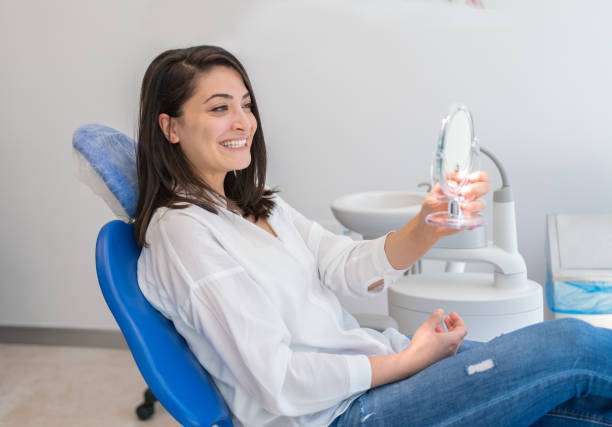
Considering inlays and onlays? Here are key considerations:
- Cost vs. Longevity: Evaluate the upfront cost against the long-term durability of inlays and onlays.
- Aesthetic Preferences: Discuss material options with your dentist to align with your aesthetic preferences.
- Oral Hygiene Practices: Commit to maintaining optimal oral hygiene to ensure the longevity of your dental restorations.
- Consultation: Schedule a consultation with Baja Dental Solutions at Tijuana Mexico to discuss your candidacy for inlays and onlays.
With the right information and professional guidance, inlays and onlays can pave the way to a healthier, more radiant smile.
